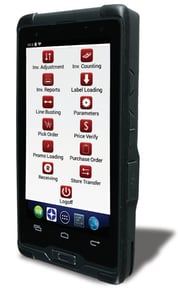Not so long ago, if your pharmacy was out of stock on something, one of two things happened. The customer either went to another store to look for what they needed or, if you were lucky, they found a staff member to ask for help.
While out of stocks have never been ideal, customers have never had more options for satisfying their retail pharmacy needs. Today, brick and mortar competition might be the very least of your concerns. An out of stock item today could mean an Amazon order on your customers doorstep tomorrow. In fact, a recently published study showed that retailers are losing close to $1 trillion in sales because items are not in stock.
Barring difficulties with your actual product suppliers, avoiding lost sales really comes down to having a robust and effective inventory management system, which means that a good system does more than help you process orders.
Automated ordering – Inventory management does mean more than resupplying sold products, but how you manage this task will control just how much extra time you spend patrolling the aisles and tracking down out-of-stocks. The first step is to pick your strategy so that your pharmacy point-of-sale system can be set up with the restocking scheme that works best for you.
- Replenishment Ordering – Exactly what it sounds like. When you sell a product, it’s added to the order so you’re always keeping the shelves fully stocked.
- Min/Max ordering- This plan allows you to set minimum and maximum quantities for products. When you sell enough of a product that your inventory hits a minimum quantity on-hand, your POS system can automatically add enough of that product to the order to bring the count back up to maximum level you set.
Of course, with both of these options, you’ll always want to take a few minutes to review the order before you send it through. And then use a handy integration to your wholesaler to send the order via EDI for quick and easy processing.
 Shelf labels – Outside of the shelves being empty, scanned pricing that doesn’t match what was on the shelf or what was advertised is likely the next inventory snafu that will cause you problems. That’s why we recommend linking up price updates and printing on-demand shelf labels to make sure that what’s in the system matches what’s on the shelves. When a price update comes through from your wholesaler, shelf labels can automatically be queued to print for the specific products you carry. (Bonus: This is way easier and faster than individually labeling product or getting stacks of labels for products that you don’t stock.)
Shelf labels – Outside of the shelves being empty, scanned pricing that doesn’t match what was on the shelf or what was advertised is likely the next inventory snafu that will cause you problems. That’s why we recommend linking up price updates and printing on-demand shelf labels to make sure that what’s in the system matches what’s on the shelves. When a price update comes through from your wholesaler, shelf labels can automatically be queued to print for the specific products you carry. (Bonus: This is way easier and faster than individually labeling product or getting stacks of labels for products that you don’t stock.)
Store recovery – Even with a well-managed inventory solution, you still have to have a little hands-on time. Unfortunately, no solution can account for customers moving product around, deaingl with shrinkage, and “front-facing” the shelves. But it doesn’t have to be a huge burden. Our recommendation is to break the store into sections and recover them on a rotating basis. Take a handheld unit to scan on hand quantities of each product so you can account for shrinkage. Remember, automated ordering can only work as designed if the inventory counts remain accurate.
Managing inventory might seem daunting at first, but with the right POS system and a good plan, you can easily avoid losing sales and customers due to out of stock issues.